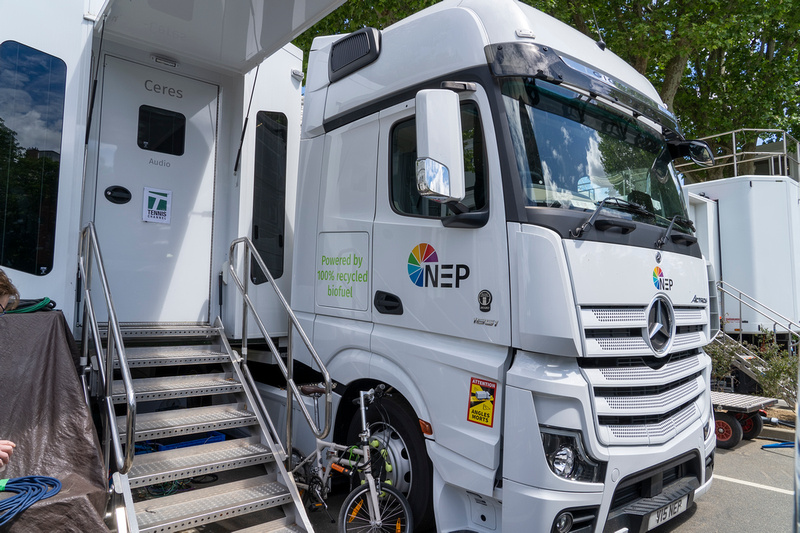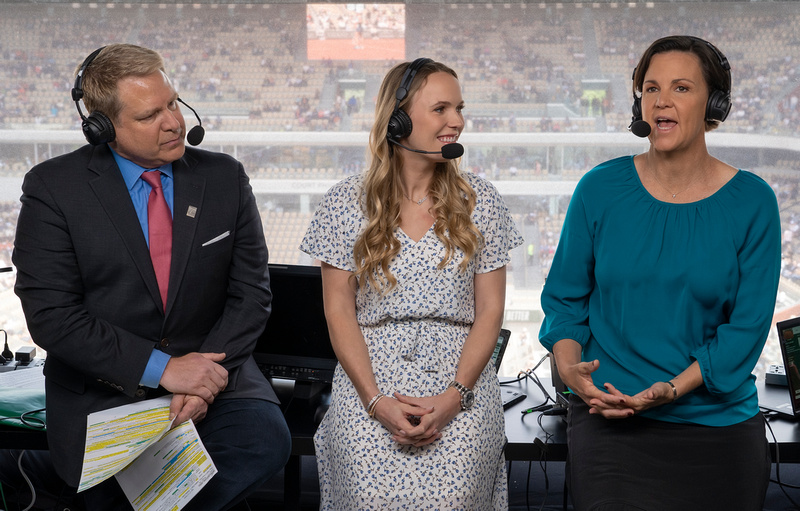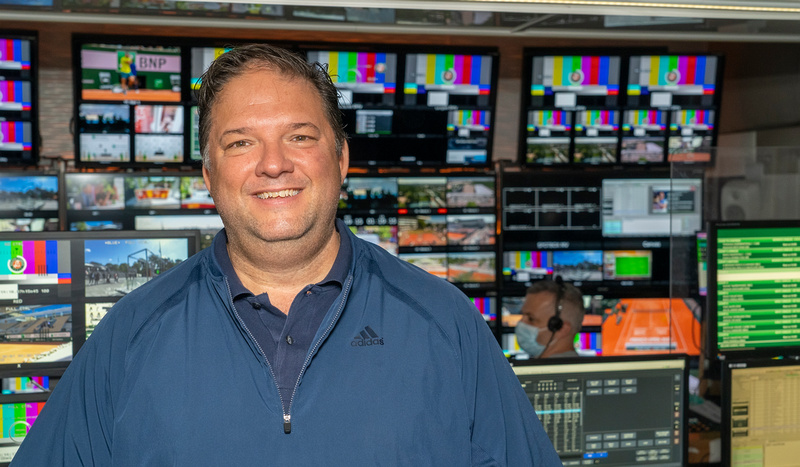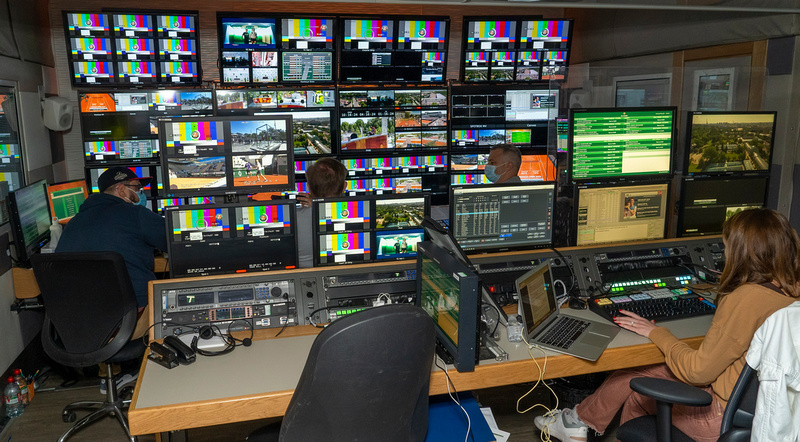2023 French Open: Tennis Channel Deploys Hybrid Workflow for First-Ball to Last-Ball Coverage
Now in its 20th year, the 24-hour network aims to continue history of innovation
Story Highlights
Nonstop action is a hallmark of Tennis Channel, and, in one of its biggest productions of the year, the French Open, the network is transporting viewers in the U.S. and around the globe to the clay courts of Roland Garros with a full slate of on-court and studio programming.
“The amount of [coverage] that we have of the French Open is the most impressive thing that we do,” says Bob Whyley, SVP, production/executive producer, Tennis Channel. “This is our 17th year at this tournament, and we’re extremely excited to be here.”

NEP Ceres is back at Roland Garros to handle Tennis Channel’s onsite production. (All photos: Fred Mullane/CameraWork USA)
To overcome the long distance between Tennis Channel’s IP-based facility in California and the venue in Paris — they’re more than 5,500 miles apart — the operations team has chosen a hybrid production model. Deployed for last year’s edition, NEP Ceres will once again be in the compound to handle onsite necessities and supply a basis for the more than 100 credentialed personnel on hand. For a major production relying on a large crew and lots of equipment, Whyley and his team wanted to bring back a truck that worked extremely well in 2022.
“Whether it be various court feeds, Hawkeye, announce booths, or press-conference rooms,” he says, “we have nearly 100 sources coming [to the truck]. We also have an RF camera that’ll be roaming the grounds to give at-home viewers an opportunity to see how amazing this tournament is.”
In the States, more than a dozen employees fulfill a multitude of responsibilities from multiple control rooms at network headquarters. A 3G pipeline connects them to the crew in France. Of that, 2G is dedicated to 24 individual court feeds being transmitted to the network’s linear and digital partners, including Bally Sports’ regional sports networks, the Tennis Channel Plus direct-to-consumer platform, the 1-year-old T2 FAST channel, and DirecTV’s Mosaic viewing option with added commentary. The other 1G is used for remote editing, with three ENG crews gathering content and sending it via Signiant’s file-transfer service.
A massive endeavor like the French Open requires every crew member to bring their A game. The back-to-back, week-by-week nature of the sport has created a familiar rhythm for the production and operations teams, but Whyley stresses the importance of remaining organized and prepared.
“We have divergent paths of bandwidth that come back to our [stateside] facility,” he explains. “If there’s something [wrong] with one path, we can go to the other. In case something happens, we also have dirty world feeds that we can cut in an emergency at master control.”
The game of tennis can take productions across the continent of Europe, with the crew constructing different sets in different locations. With the French Open starting soon after the 2023 Italian Open in Rome, the network needed to deploy onsite teams in two cities over the past week. After two weeks of setup, fans are treated to a picturesque set featuring on-air talent Steve Weissman, Prakash Amritraj, Chanda Rubin, and Jon Wertheim.
“We have a beautiful set that’s just outside of Musketeers Garden,” says Whyley. “We also have [connectivity] to the two main courts — Court Philippe Chatrier and Court Suzanne Lenglen — so, if we’re not bringing [the winner] to the desk, we’ll interview them on the court.”
Although the 2023 French Open will be the main priority, the Tennis Channel will use the tourney to highlight its 20th year. Working at the 24/7 home of all things tennis for two decades, Whyley was in at the beginning and has seen the technology evolved in numerous leaps. And the network has been at the center of them as one of the first to implement new workflows.
In 2003, programming was distributed in standard definition, but, when high definition became the go-to a few years later, Tennis Channel made the transition in a facility opening in Culver City, CA, in 2007. The same year, the network made a concerted effort to share multiple video feeds of tournaments to its audience online for free. Trends like 3D made their way into the mix at the French Open in the late 2000s, but one of the most noteworthy breakthroughs was the development and launch of Tennis Channel Plus in 2014.
Today, in a media-production landscape dominated by technologies like 4K, UHD, and IP and marked by fans’ voracious appetite for content, Whyley’s next task is to satisfy the cravings of the audience while staying ahead of the technological curve.

From left: Tennis Channel analysts Brett Haber, Caroline Wozniacki, and Lindsay Davenport at Court Philippe Chatrier
“I’ve had the privilege of seeing where we started and how far we’ve come,” he says. “We take a lot of pride in being able to give our viewers everything that the game has to offer. Now we need to figure out ways to make sure that our product is seen by as many people as possible.”
The network’s success is on pace to continue in the right direction, reinforced by the guidance of Tennis Channel Chairman/CEO Ken Solomon and EVP/COO/CFO Bill Simon as well as by technical support from colleagues at Sinclair Broadcast Group, including SVP, Sports Engineering and Production Systems, Don Roberts; VP, Engineering and Technical Operations, Bruno Brunelle; and President, Technology, Del Parks.
“You have to have the right people, the right technology, and the right mindset,” says Whyley. “We have a great team, where everyone is all-in, and I thoroughly enjoy being a part of it.”


